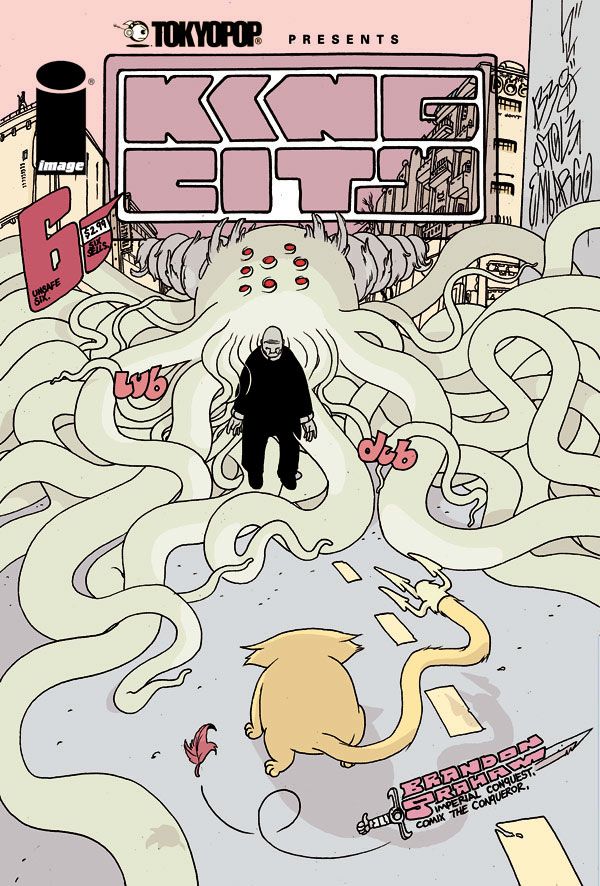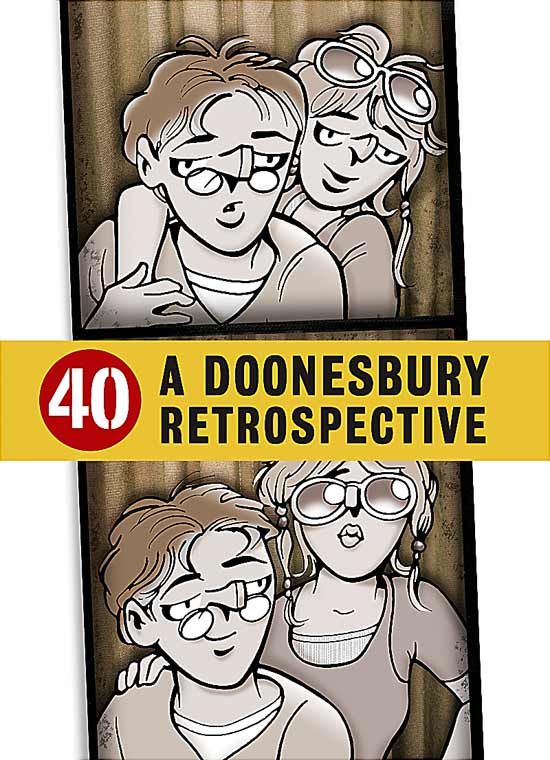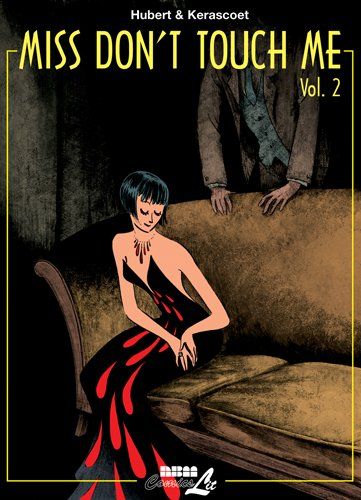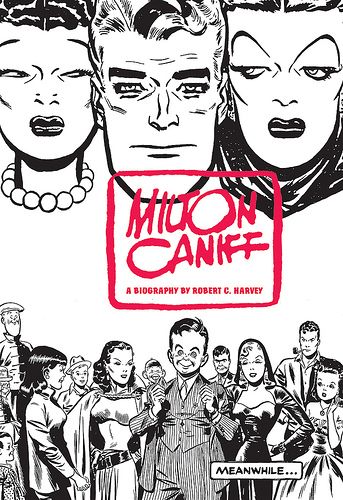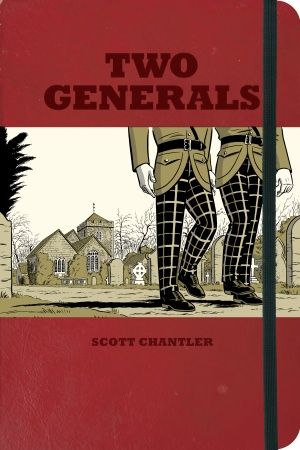Hello and welcome to another week of What Are You Reading?, where we talk about what comics and other stuff we've been reading lately. This week our special guest is Robin McConnell of Inkstuds fame, who will be guest blogging with us as well. Robin has a new book out that collects 30 of his interviews with folks like Jeff Lemire, Joe Sacco, Kate Beaton, Jaime Hernandez and many more; you can find more details on it over on his website.
To see what Robin and teh rest of the Robot 6 crew are reading, click below.
*****
Tom Bondurant
For someone who grew up with the oversized Doonesbury collections, the 40: A Doonesbury Retrospective oversized hardcover is a real treat. There's a good selection of strips, and each section is separated by two-page essays on major characters. Mostly I have found myself roaming through the '70s and '80s, revisiting old favorites and discovering less-familiar sequences. I do wish Trudeau's sabbatical, and the "continuity" of the Doonesbury musical, had been incorporated into the book more smoothly, but that's a minor nitpick. This is a sturdy book which will stand up to the multiple readings I'll give it.
This week I bought two "one-shot" tie-ins to regular series, the Steel and Starman/Congorilla specials. Most of the suspense of Steel (written by Steve Lyons, drawn by Ed Benes) came from my running speculation as to whether DC would really send Doomsday to kill one of its most prominent African-American characters, especially one with a significant fan following. SPOILER ALERT: the issue sure makes it seem that way, right from the first page. Mostly, though, it's a recap of Steel's superhero career which seems more like a reintroduction than a farewell. I'm cautiously optimistic a resurrection won't be necessary.
Indeed, Starman/Congorilla (drawn by Brett Booth) reveals that reports of another character's death had been greatly exaggerated. This makes at least two for writer James Robinson, who you'll remember apparently killed Blue Jay early in his Justice League tenure. Besides that, though, I thought S/C was a lively standalone story -- maybe heavy-handed in places, but a good read overall.
The Lobo story (written by Kevin Van Hook, drawn by Jerry Ordway) in Weird Worlds #1 is the best thing about the new anthology. It's a tight, darkly funny first chapter which requires little previous knowledge of the character. Ordway's work is looser and (for lack of a better phrase) more muscular than I've seen it, even in the old days when he was doing installments of the "Superman in Exile" storyline. The other stories, "Garbageman" by Aaron Lopresti and "Tanga" by Kevin Maguire, introduce new characters in less successful fashion. Because it seems painfully obvious to Lopresti that his Garbageman origin is a mash-up (no pun intended) of Swamp Thing's and Man-Thing's, Lopresti tries to have fun with it, but it comes across as overwritten. By contrast, not much happens in "Tanga," which establishes the character as a fairly run-of-the-mill hard-edged pixie. The art in these stories is as good as you'd expect from these old pros, so maybe the scripts will catch up now that the preliminaries are out of the way.
Chris Mautner
The second volume of Miss Don't Touch Me fascinates me in that it's a complete refutation of the previous volume's antics. Whereas in the first book, the main character was able to get revenger for her sister's murder and navigate a series of treacherous situations and persons due to her utter naivete and steel-headed determination (plus an occasional willingness to kill). In part two we see how those qualities stop helping and become detriments. Still working in the brothel, our poor heroine finds herself manipulated by every person who should offer succor or aid and her sympathetic desire to be loved and frustrating cluelessness at how the world actually works leads her to make an monstrous decision. Several reviews of the book complained about how the character became much more passive compared to the go-getting sleuth she was the first time around. Myself, I can't help but admire the creators for basically turning around and saying "You know all that stuff we had in our last comic was just pulp novella bullshit, don't you? Here's how a character like this would really function in this world."
Speaking of naive fools in love I also read the second volume of Tonoharu, Lars Martinson's saga about a mopey schlub teaching English to Japanese high school kids in a rural town even though he doesn't speak a word of Japanese. The sequel finds him developing a romantic relationship with another teacher, though Martinson seems to be setting him up for a big fall. As with its predecessor, the book remains enjoyable though I have to ask: why in stories of this nature does the main character always listen to his lothario friend's advice, especially when it's so utterly clear said friend is a creep whose advice should in no way be heeded?
Tim O'Shea
I was overjoyed when Fantagraphics recently had one of its holiday/year end sales and I was able to acquire Meanwhile..: A Biography of Milton Caniff, Creator of Terry and the Pirates and Steve Canyon (no really that's the entire book title, but we'll go with "Meanwhile" for any second reference), by noted comics scholar Robert C. Harvey. But when it actually arrived the other day, I was astounded to discover the size of the book. Coming in at nearly 1,000 pages, the book was done with the late Caniff's full cooperation and benefits from the fact that he and Harvey were friends. How detailed is the book? Harvey has a final chapter on the making of the book. In that chapter, Harvey notes that Caniff used to tell a story where he had been fired by the same paper that fired James Thurber. Harvey admits that he could never find any proof that Thurber was fired from that paper. I'm absolutely mortified that I missed this book when it was released in 2007, but glad I have the chance to give it praise now. Any storyteller as influential as Caniff was and is deserves a biography of this caliber.
Brigid Alverson
A teenager who is slowly waking up to a great power he cannot control ... throw in some battles and you have the storyline for most shonen manga. Hero Tales, which was created by some doujinshi (fan comic) artists and Fullmetal Alchemist Hiromu Arakawa, is one of the more readable examples of the genre, and I'm enjoying it immensely. It's set in ancient China and loosely based on some mythology involving the stars, but its' really the story of a young man coming of age. He is the incarnation of one of the stars of the Big Dipper, which means he has immense power, but when someone he loves is threatened, he loses control and sort of Hulks out. There are plenty of fantasy elements in play here: He lives in a region that is controlled by a strong empire, with brutal rulers; he is searching for a sword that chooses who may draw it; and he is traveling with a wise teacher, a scrappy trickster, and his beloved sister. The art has a nice clarity to it, and the story is complicated enough to be interesting, with lots of complications occurring between the battles.
I used one of my Christmas gift cards to buy Scott Chantler's Two Generals, and it arrived the other day. I liked Chantler's children's book, Tower of Treasure, a lot ... it's sort of the perfect children's adventure story ... but that's the only book of his I have read. Two Generals makes a wonderful first impression. It is designed to look like a leather-bound diary, complete with elastic bookmark. I'm not too far into the story yet, and it's getting off to a bit of a slow start, with a lot of scene-setting, but it's a good read. Chantler's art is in the ligne claire tradition, with a touch of shading and very limited color, which suits the subject matter very well. I know from flipping forward that there are battle scenes to come, but I like that he is taking the time to set up his characters and who they are. The graphic novel is based on his grandfather's diaries, and Chantler has set up a research blog to document his source material, with photos and footnotes, which adds a nice extra dimension to the story.
Robin McConnell
King City # 12 by Brandon Graham (Image Comics/ Tokyopop) I have really been loving this series. Brandon Graham’s work is a wonderful mix of comics. You can tell that he has grown up in comics, reading them voraciously and then distilling them into whole new works. The fascinating thing about the King City work is that you can really see how he has grown as cartoonist. There is a shift in the story telling techniques from the first 6 issues, originally published as a manga by Tokyopop, to the second half of the series. He allows the comic to open up and be less about serving a certain storyline with a traditional arc, and let the characters find their own ways and directions.
A Single Match by Oji Suzuki (Drawn & Quarterly) I just got this in the mail, and have only started jumping into it. I am not really a manga fan, but the Gekiga-Ka work that D&Q has really blown me away. This book seems to be in a comic language of its own. A Single Match is a collection of short stories that come together in a unique narrative conceit of this oblique lively hood of a Japan in the midst of loneliness and poverty. Suzuki’s art style has a scratchy delicate quality to it that shows each line has an intended purpose within the stark barren landscape. This isn’t a happy book by any means, but the visual poetry that Suzuki utilizes is creatively charged in placing the reader in rural uncomfortable setting.
Nurse Nurse 1-7 by Katie Skelly (Calico Comics) This previous week on the Inkstuds, we did a best of 2010, where I had Michael DeForge, Noah Van Sciver and Zack Soto on to discuss their picks of the year. Nurse Nurse was one of the books on the list that needed catching up with. I loved them. Skelly’s comics are playful, fun and energetic. She has been self-publishing Nurse Nurse for about 3 years now. It’s an odd mix of mod fashion, sci-fi and just general zaniness. Fun comics.
Wally Wood comics (Tons of Publishers) A little digression. In this current golden era of comic book reprints, there have been some big gaps in publishing focus. Wally Wood was one of premier stylists of the EC era. His work had an incredible beauty and shine to it, that no one else could really touch. He was a prolific perfectionist. I was in New York last month and went the excellent comic store, Roger’s Time Machine. I picked up a stack of Wally Wood reprints, including some issues of Cannon, an Incredible Science Fiction and last but not least, Wally Wood 3-d. Do yourself a favour and read this - http://comicscomicsmag.com/2010/02/wally-wood-should-have-beaten-them-all.html and go pick up some Wally Wood stuff from your local comic store.
Bill Everett: Fire and Water by Blake Bell (Fantagraphics) Blake’s previous work, was the most excellent biography of Steve Ditko, Strange and Stranger. As biographer and historian, Bell excels. He is able to really understand the cartoonist he is documenting and boil it down to the essentials. Both books, while the may not be complete biographies along the lines of RC Harvey’s Milton Caniff book, these are more penetrable and consuming. The production on this book is amazing. Bell is able to reproduce a good amount of original artwork that allows you to see just how skilled a draftsman Everett was. I picked up the soft-cover Marvel Masterworks that collected the first 10 issues of daredevil, and in the back of the book, they reproduce 2 original Everett pages, which look amazing. When compared to the print versions, you really get an understanding of just how lousy a job that Marvel has been doing on reprinting golden age and silver age work. While it is great to see this stuff in print, it would be better served to not be done in such an inferior way. The Fantagraphics collections really show how great this work can look.


